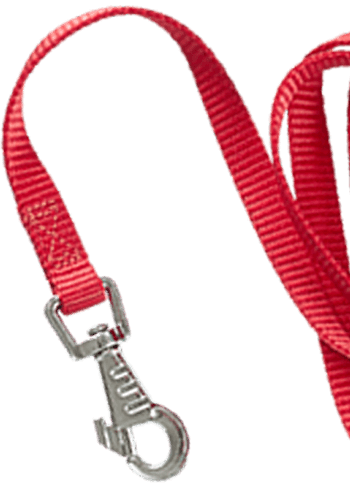


Puppies love to play and should be well-socialized. If your puppy is the only one in your household, what can you do to introduce her to potential puppy friends, socialize her and give her the opportunity to burn off that puppy energy? Visit a dog park.
A dog park is a spot that provides social interaction, a space to run and get exercise, but know that not all dog parks are created equally. There are parks that aren’t suited to new puppies. There are other parks that are best suited for large breed dogs, but may have an area set aside for the smaller breed dogs. Before you take your puppy to the dog park, do your research, including on-site visits before you let your puppy loose in the park.
Before you let your pup loose in the dog park take his personality into consideration. If your puppy is reticent, he may not do well in an enclosed environment with other more enthusiastic puppies. Some puppies will fully immerse themselves in the dog park experience; other puppies may be overwhelmed and afraid and may never enjoy their time there. Pay attention to how your puppy is reacting to the situation and be prepared to remove him if it is not a good fit.
When you’re visiting the park:
Here are precautions to take to assure your puppy is safe and has fun at the dog park.
How old should your puppy be before he goes to the dog park?
Sixteen to seventeen weeks is considered the ideal age to take your puppy to the dog park. By this age, your puppy should have had all of her vaccinations and will be protected from dog park borne illnesses. Making sure your puppy is up to date on its shot schedule is important for your puppy’s overall longevity. Does the dog park you’re considering going to require proof of vaccinations? This is a precaution the dog park operator should take and the puppy owner should look for.
Is your puppy emotionally ready for a dog park visit?
If your puppy hasn’t been around older dogs she may not know how to act and may not understand and react to the warning signs an older dog may give off – growling, lip curling, etc. Regardless of the size of your puppy, she may be in an area with older dogs who may be overwhelmed by the actions of a puppy; you don’t want your puppy injured simply because he can’t control his enthusiasm.
Keep a collar with tags and your contact information on your puppy.
When you’re at the dog park, on a walk or outdoors, your puppy should wear a harness or collar with a tag and your contact information on it. Many pet parents will get their puppies microchipped as an additional safety measure.
Does your puppy know basic commands?
By the time your puppy is old enough to visit a dog park he should have mastered basic obedience commands like: sit, come, drop it, etc. Your puppy should respond as soon as you call his name – no matter how much fun he is having. “Drop it” is also a crucial command your puppy should understand – you don’t want him to chew on something that could make him ill or cause injury. If the dog park is not fenced in, you may want to keep your puppy on a leash to assure he won’t dash out into traffic.
How can you assure your puppy doesn’t get injured at the dog park?
No matter how well you have planned, there is a possibility your puppy could get injured at the dog park. It may seem unlikely, but it does happen. Pay attention to your puppy when you’re at the dog park, don’t spend time on your phone because you think your puppy is safely contained. You may want to socialize with the other pet parents and pay attention to your puppy.
Understand the body language your puppy is exhibiting as well as the body language of a dog he may be interacting with; if your puppy is trying to play with a dog who clearly doesn’t welcome the attention, you need to remove your puppy from a situation in which he could get injured. It is best to find a dog park that offers separate areas for large dogs and small dogs; a puppy may qualify for the small dog area for a brief time and prevent injury from a larger, more boisterous dog in the large dog area.
What supplies should you bring to the dog park?
You need to bring a leash and have your puppy wearing her collar. Bring a water bowl and water for her. Don’t forget some treats to distract and/or reward her for obeying a command. When you give your puppy a treat, don’t do it with other dogs around as that could lead to a fight for the treat.
Don’t forget the poop bags – most dog parks provide them, but if they have run out you need to be prepared.
Bring your puppy’s favorite toy and play fetch with her. Before you begin tossing a toy to your dog you will want to make certain he will be safe and that no fight will ensue if another dog tries to take the toy. Just setting her loose in the dog park may be fun for her, but you should make a dog park visit a bonding time for you and your new puppy.
What if going to a dog park with your puppy just isn’t a good fit or an option?
If a dog park doesn’t feel like a fit for your puppy… or for you, there are other ways in which your puppy can meet other puppies, get socialized and burn off some of that puppy energy.
Do you take your puppy to a dog park? Does she enjoy it? What tips can you offer to new dog parents about having fun at the dog park?
If you’re interested in a white Labrador puppy, visit us at Snowy Pines White Labs, we do things differently. We are AKC-certified Bred with Heart Breeder and take pride in breeding the happiest and healthiest white labrador puppies in the United States. From the moment our puppies are born, they play all over our beautiful property to play and socialize. We believe in continuing the class of white labradors by breeding healthy, active, and friendly dogs that are perfect for your home.
Check out our available puppies or contact us today to get started on finding your new family member!